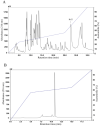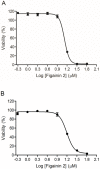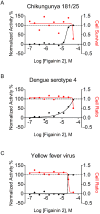Biological Properties of a Novel Multifunctional Host Defense Peptide from the Skin Secretion of the Chaco Tree Frog, Boana raniceps
- PMID: 32443921
- PMCID: PMC7277517
- DOI: 10.3390/biom10050790
Biological Properties of a Novel Multifunctional Host Defense Peptide from the Skin Secretion of the Chaco Tree Frog, Boana raniceps
Abstract
In recent years, the number of new antimicrobial drugs launched on the market has decreased considerably even though there has been an increase in the number of resistant microbial strains. Thus, antimicrobial resistance has become a serious public health problem. Amphibian skin secretions are a rich source of host defense peptides, which generally are cationic and hydrophobic molecules, with a broad-spectrum of activity. In this study, one novel multifunctional defense peptide was isolated from the skin secretion of the Chaco tree frog, Boana raniceps. Figainin 2 (1FLGAILKIGHALAKTVLPMVTNAFKPKQ28) is cationic and hydrophobic, adopts an α-helical structure in 50% (v/v) trifluoroethanol (TFE), and is thermally stable. This peptide exhibited activity against Gram-negative and Gram-positive pathogenic bacteria arboviruses, T. cruzi epimastigotes; however, it did not show activity against yeasts. Figainin 2 also showed antiproliferative activity on cancer cells, is moderately active on human erythrocytes, and activates the oxidative burst in human neutrophils.
Keywords: Boana raniceps; amphibian; antimicrobial peptide; multifunctional defense peptide; neutrophils; skin secretion; structural analysis.
Conflict of interest statement
The authors declare no conflict of interest.
Figures









References
-
- Laxminarayan R., Van Boeckel T., Frost I., Kariuki S., Khan E.A., Limmathurotsakul D., Larsson D.G.J., Levy-Hara G., Mendelson M., Outterson K., et al. The Lancet Infectious Diseases Commission on antimicrobial resistance: 6 years later. Lancet Infect. Dis. 2020:1–10. doi: 10.1016/S1473-3099(20)30003-7. - DOI - PubMed
Publication types
MeSH terms
Substances
LinkOut - more resources
Full Text Sources
Other Literature Sources
Molecular Biology Databases

